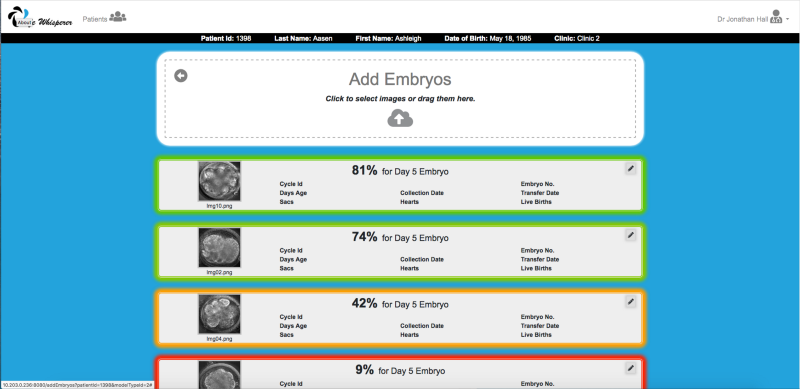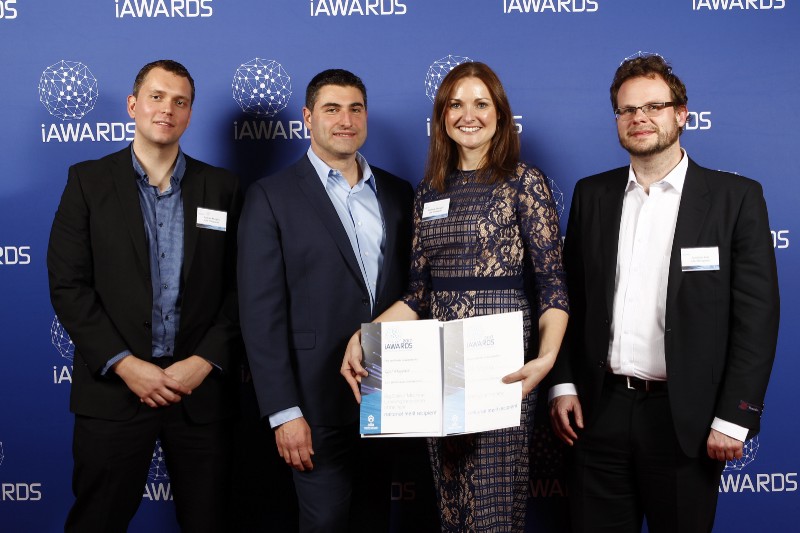Artificial Intelligence (AI) has the ability to change the world in a multitude of ways. Life Whisperer is using AI technology to improve the chances of detecting viable embryos for IVF, improving the ability for couples to start a family. We spoke to Don Perugini co-founder of Life Whisperer about the challenges of developing such a life-changing technology.

What is your health innovation? What does it aim to do?
Fertility is declining globally. Success rates for IVF are very low (~20%), placing significant emotional and financial strain on couples. Selecting the right embryo is critical to a successful pregnancy outcome. Life Whisperer uses artificial intelligence (AI) to assist clinicians identify viable embryos in IVF, and to ultimately improve outcomes for couples wanting to have children. Life Whisperer is delivered to clinics via a scalable web-based tool and can be easily accessed on-demand by any clinic globally. In a recent clinical study of 598 patients Life Whisperer performed over 30% better than world-leading clinicians in accurately identifying embryo viability.

During the IVF process, eggs are fertilized and develop into embryos. At this point, a clinician (embryologist) needs to decide which embryo to transfer into the patient. Manual selection of embryos is difficult, highly subjective, and limited to what the eye can see down a microscope. Other approaches to selecting embryos include genetic screening (PGS) which is costly, risky, and invasive, or time-lapse imaging which requires specialized hardware and is ineffective in detecting embryo viability. Life Whisperer uses deep learning AI and computer vision to support the clinician to identify the most viable embryo with the highest likelihood of success.
Life Whisperer’s AI was created by training image recognition algorithms on a large dataset of embryo images with matched pregnancy outcomes. The trained AI can effectively assess and identify morphological features that constitute a viable embryo. The Life Whisperer tool allows clinicians to drag and drop single images of patient embryos taken immediately prior to transfer and returns an instant report as to the viability of each embryo to support the clinician’s decision about which embryo to transfer. Unlike other solutions, Life Whisperer’s web-based approach is non-invasive, does not require specialized hardware, requires little process change in the clinic, and can be delivered at a low cost to patients.
How do you celebrate and showcase your successes? Who is the first person you tell?
Press releases, social media, blog posts, and award competitions.

What challenges have you come up against in developing your health innovation? What motivated you to keep going?
Two major challenges are:
(1) Getting clinics on board for providing additional data and participating in clinical trials. Some are interested in doing so, however, issues such as overcoming privacy around private health data can be a challenge.
(2) Getting investment to support Life Whisperer, or better still, early adopters (IVF clinics) on board that are willing to commit to conducting clinical trials and use the product when it is released.
What is one thing the public could do to help your innovation to succeed?
Talk about Life Whisperer (e.g. on social media), and importantly encourage IVF clinics to support Life Whisperer with the aim of using it later this year when it is released to improve IVF outcomes for their patients.
What are the benefits of developing your innovation in Australia?
Great technical expertise, great government funding support, great start-up eco-system, and support (e.g. we are hosted by the Thinclab incubator that Adelaide University runs, which is of great benefit to us as a startup).
Life Whisperer is rapidly growing, keep up with their progress on Health Horizon plus subscribe to the Australian Health Innovation Showcase for fortnightly updates on health innovation in Australia.
